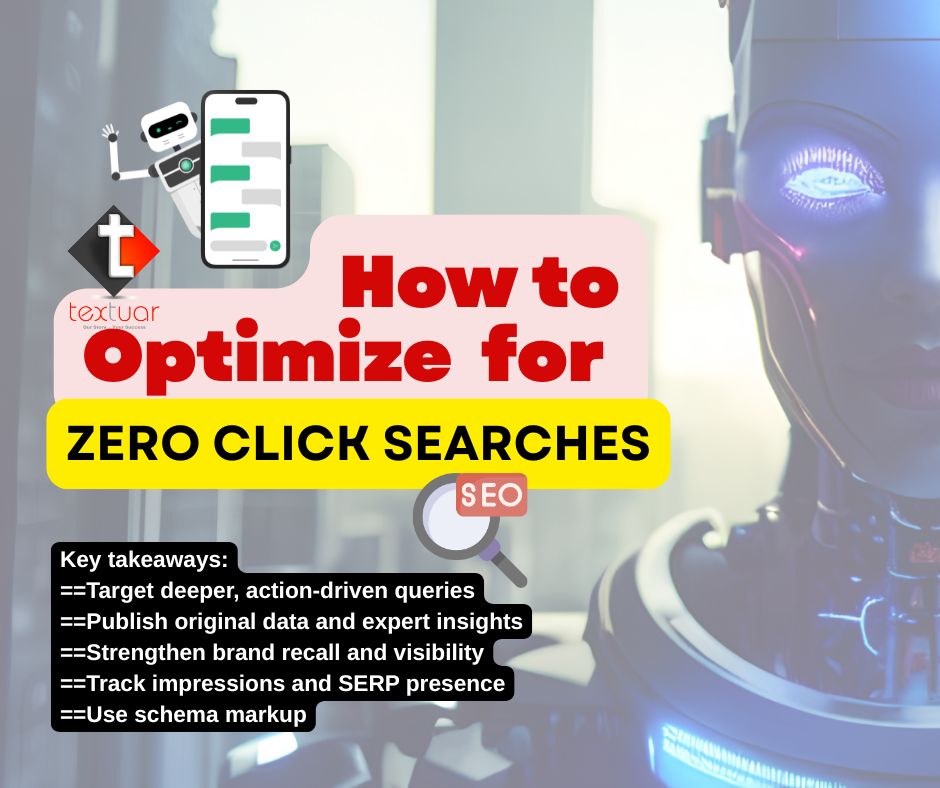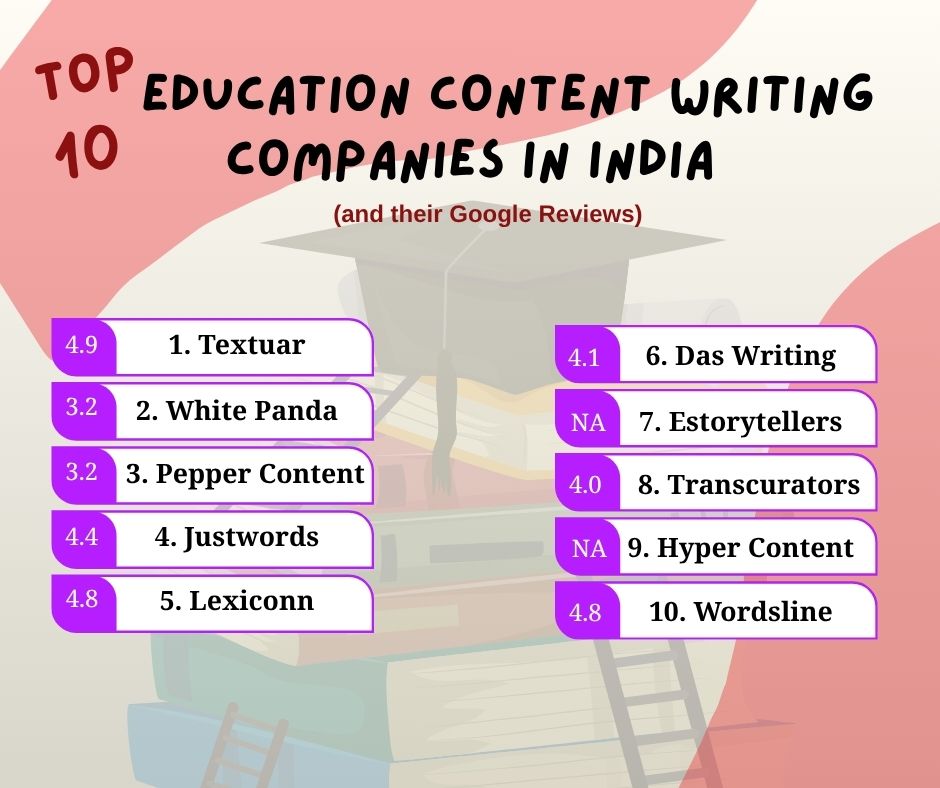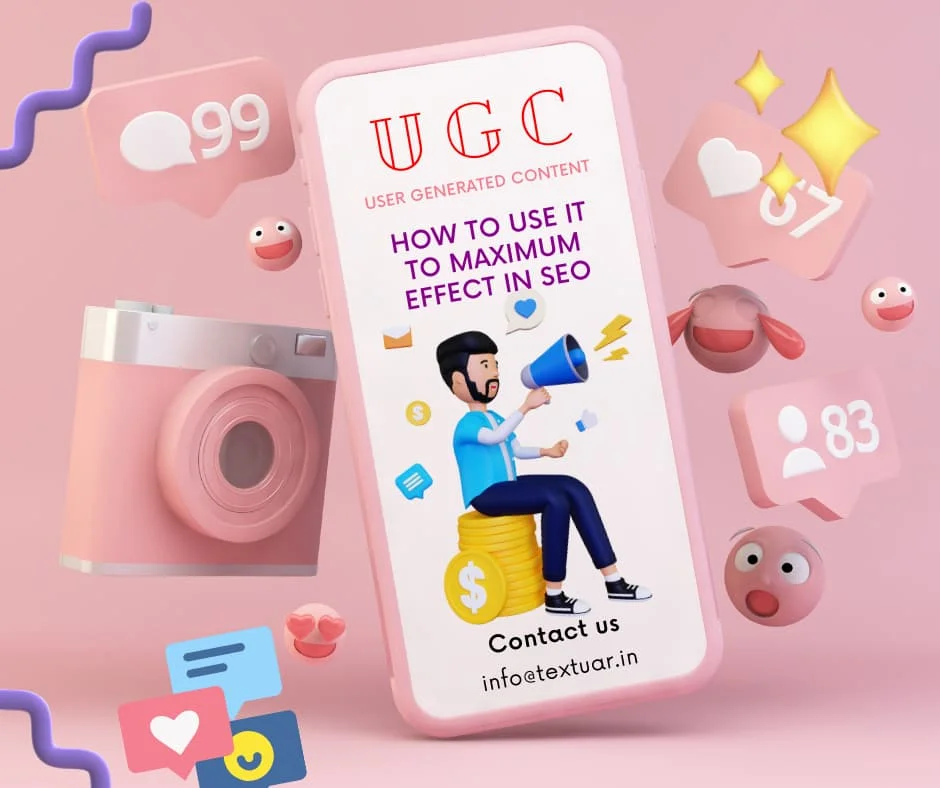Summary- A fashion content writing expert uses emotion to motivate your readers to purchase your products. How do they do so? They come up with captivating headlines and use catchy words to describe the process. Read to see who benefits from this type of content and how to convert visitors to paying customers for your fashion and apparel content.
Let’s face it- fashion writing on the internet is not easy. You may often spend a lot of time crafting words to describe that gorgeous dress or those coveted sneakers.
Then nothing. Readers click away without purchasing.
Ring a bell? You’re not alone.
Many marketers, owners of boutiques, and bloggers deal with this very frustration. Pretty words do not necessarily convert into sales.
That’s where conversion writing comes in. Such fashion content writing helps fill the gap between loving your content and actually buying your products.
Let it be your best-kept secret. We’re not talking about dry sales copy here. We’re talking about connecting with your audience. You need content that hits home, builds trust, and nudges them toward a “yes.”
Ditch generic tips. We’re going into actionable, real-world strategies designed specifically for the fashion industry. These strategies in fashion content writing show how fashion enthusiasts think and buy online.
Ready to turn your words into your top sales tool? Let us unleash the potential of truly converting content.
Why Fashion Content Writing Matters?
Fashion doesn’t sell garments but dreams. Folks purchase fashion products to be who they are. They desire to be confident, fashionable, and a part of something grander. This turns fashion into an intensely personal, aspirational market.
Your content needs to resonate with these feelings. When you share great stories, you forge genuine connections with customers. Your brand voice can make customers feel like they are part of your family. This relationship creates loyal clients who return time and again.
Check out brands such as Glossier and Everlane. They expanded from humble beginnings to industry leaders through effective content strategies. Glossier established a beauty empire on genuine stories and customer-generated content. Everlane, too, employed transparency and storytelling to transform sustainable fashion.
These brands demonstrate that content fuels growth. Editorial blogs highlight your personality and expertise. Lookbooks enable customers to visualize your products in their wardrobes. Social media posts build daily touchpoints with your audience.
The evidence is in the results. Great fashion content drives your SEO rankings. It raises social media engagement rates. Above all, it generates higher conversion rates on your site. Clients who engage with your story turn into buyers who believe in your brand.
Who Gains from Fashion Content Writing?
Fashion content writing benefits a multitude of businesses and professionals. Each category has specific challenges that well-planned content can address.
1. Emerging Designers & Startups
New brands must gain recognition quickly. Good content will make you stand out from the noise in competitive markets. Therefore, you can highlight your special design philosophy and engage with your audience. This creates brand identity from day one.
2. Established Fashion Labels
Large brands employ content to reinforce their dominance. Regular updates keep long-time customers engaged. New content also ensures successful launches for new collections. It solidifies your place as an industry leader.
3. E-Commerce Retailers
Online retailers profit from improved product descriptions. Good, clear copy drastically decreases return rates. It also gets more units purchased per order. As a result, this increases your average order value.
4. Fashion Bloggers & Influencers
Content creators require genuine posts that appeal to followers. Engaging in writing brings brand collaborations and sponsorship opportunities. It assists in creating a loyal audience around fashion subjects.
5. Marketing Teams & Agencies
Expert marketers build campaigns for seasonal drops and one-shot events. Strategic content fuels successful collaborations and partnerships.
If you are in one of these fields, then fashion content writing is just for you.
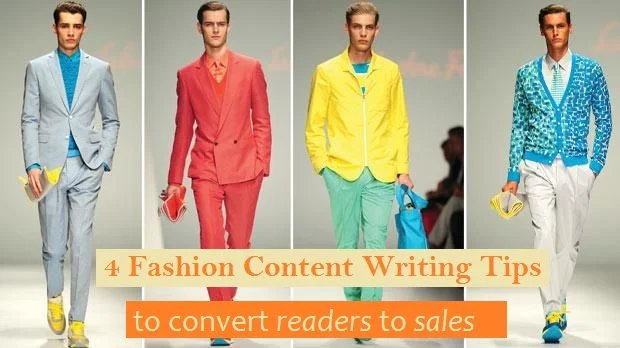
The first step to captivating content is to learn more about your target audience to craft suitable marketing messages. Let us know more about this aspect.
Understanding Your Target Audience
Effective fashion content begins with having a deep understanding of your audience. You can’t create an effective copy without knowing who you’re speaking to. One-size-fits-all messages don’t cut it in today’s competitive fashion environment.
1. Demographics & Psychographics
Begin with the basics. Determine their location, income, gender identification, and age range. But there’s a catch: dig deeper. What kind of music do they enjoy? Where do they go on vacation? Do they prefer sustainability or luxury? For instance, sustainable millennials in urban areas may want recycled materials. Whereas, well-off Gen Xers may hunt for classic investment items. These factors inform your tone.
2. Pain Points & Desires
They reveal their concealed struggles and desires. Do they feel buried under fast fashion’s ecological footprint? Perhaps they require multi-functional home-workwear. Or possibly they search for limited-edition exclusives. Or they may engage emotionally. Demonstrate that you comprehend their demand for affordability, durability, or individualistic expression. Fix their dilemmas before they even ask.
3. Channels & Touchpoints
Your customers congregate at certain locations online. Your younger customers may be scrolling through Instagram every day. Professional women tend to read email newsletters during lunch hours. Cost-conscious shoppers commonly use Google for bargains.
Plot where your customers spend their time. Then, design content specific to each platform and touchpoint.
Copywriting trends for the fashion industry
If you operate in the fashion industry, attractive content, catchy headlines, and coverage on the latest trends will always draw in more customers. As an outcome, visitors will get converted to leads and leads to consumers. If you are planning to work with a fashion content writer, then make sure these tips are factored in during the content writing process:
Communicating with niche customers
From sharing simple news to offering targeted content on the latest trends, content categorization is highly important. With exclusive, fresh, and engaging content, you can drive the smart young minds to get helpful information and prompt them to act on your call to action.
A majority of online stores fail to create customized content for visitors which prevents them from carving a distinctive niche in the professional arena. Deeply personalized fashion content is the fundamentals of effective communication, and as a fashion house marketing specialist, you just cannot ignore them.
‘What’s in a name’ theory busted
When it comes to the fashion industry, correct terminologies have a vital role to play. If you aren’t using the right terms for a specific product, you are losing out on a considerable amount of consumers. For instance, ‘Leatherette’ and ‘Leather’ look similar but are different in nature.
How it helps – These subtle differences play crucial roles in captivating consumer’s attention. Eliminate this faux pas by engaging with capable fashion content writers who have experience in offering content writing services for this domain.
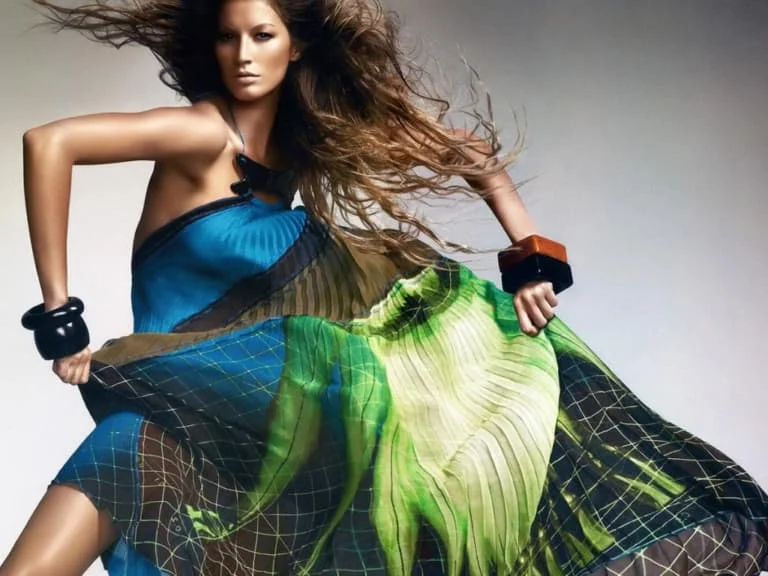
Understanding the different lingos
Even if two fashion labels come up with similar products, their sales objectives, business principles, and target audience will be different. A smart and ingenious fashion content writer needs to understand the subtle difference between them.
How it helps – That will help them identify the target audience for each store, thus creating appropriate and targeted copies for them.
Be informed
If you are blogging or creating web content for a fashion label, staying updated on the latest fashion trends will be a crucial necessity. Staying informed about the phenomenal changes in the fashion scene and spotting celebrity styles is a mandate that has to be followed in fashion content writing.
How it helps – Captivating and relevant copies will generate a lot of interest amongst potential visitors. They perceive your brand as a frontrunner in spotting international trends. As a result, you can build customer loyalty by publishing such content regularly. With customer loyalty, you can be sure of sales overdrive.
How to Write Fashion Content to Maximum Impact?
Below, you will find some fantastic suggestions that will be incredibly useful.
Tip 1- Writing Great Headlines
Your headline is your initial (and sometimes sole!) opportunity to capture attention. It’s like a store window display. If it fails to catch your readers, they scroll on.
1. Why Headlines Matter?
– 8 out of 10 individuals read headlines but don’t read the rest.
– A poor headline submerges excellent content.
– A strong one attracts readers and sets them up to participate.
2. Best Practices for Winning Headlines
Use strong words in fashion content writing that evoke feelings. Words such as “must-have,” “essential,” and “exclusive” capture attention immediately. Numbers also increase click-through rates considerably. Headlines like “7 Summer Dresses Under $50” rank higher than ambiguous equivalents.
Include timely words to induce urgency. “Summer ’25 Trends You Can’t-Miss” is a better title than “Summer Fashion Trends.” The inclusion of the specific year and urgent term induces instant clicks.
Opt for 6-10 word headlines when practical. Short headlines read well on mobile phones. Meanwhile, they also provide space for interesting preview text.
3. Test & Refine
Don’t make assumptions. Conduct simple A/B tests in headlines for fashion content writing-
– Try two alternative headlines.
– Monitor open rates (emails) or click-through rates (social media/blogs).
– Deploy the winner. Even minor changes can drive results spectacularly.
4. Examples of Headline Styles
| Style | Example | Why It Works |
| Listicle | “7 Must-Have Accessories for Spring 2025” | Numbers imply concise, scannable content |
| How-To | “How to Layer Denim for a Chic Streetwear Look” | Promises practical, actionable advice |
| Question | “Are Skinny Jeans Outdated? Here’s What’s Next” | Sparks curiosity; invites the reader to learn |
| “Why” Explanation | “Why Sustainable Materials Are the Future of Fashion” | Appeals to values, establishes authority |
Tip 2- Descriptive Storytelling
Stories sell, but facts tell. Mundane descriptions like “blue sweater” will never have shoppers abuzz. Instead, take people on an experience. Get them to feel your brand.
1. Create Pictures with Words
Employ evocative verbal imagery– “Step into a bright showroom and view rows of buttery-soft pastel knits.”
Appeal to senses– Inform readers about textures, color, and noises (“the soft rustle of organic linen”).
Set scenes– Place products in aspirational situations (“Sunday brunches by the sea”).
2. Tell Your Brand Story
Share your origin– “Every scarf is individually made in Lisbon by skilled craftsmen employing techniques that have been used for centuries.”
Highlight values– Interweave ethics or craftsmanship (“Dyed with natural extracts, safe for rivers”).
Make legacy– Connect products to people or places.
3. Set Emotional Hooks with Fashion Content Writing
Appeal to fundamental desires– Confidence (“Command the boardroom in this fitted blazer”), nostalgia (“Your go-to childhood denim, reimagined”), or empowerment (“Own powerful in curve-embracing silhouettes”).
Solve hidden struggles– “No more wardrobe crisis—transitional pieces blend seamlessly.”
Why Do Stories Work in Fashion Content Writing?
Stories evoke more emotional connection than descriptions alone. Readers want to escape, dream, and belong. Give it to them. Then, watch loyalty thrive.
Tip 3- Adding Visual Elements to Fashion Content Writing
Fashion is a visual business where images communicate as loudly as words do. Your written word must be supported strongly by visuals to grab attention and spur sales. The synergy of effective copy with beautiful images is an unbeatable combination.
Visuals assist customers in grasping your products better. They also generate emotional bonds that cannot be created by words only. Clever brands employ visuals for telling stories.
1. Role of Imagery in Fashion Content Writing
High-quality images, videos, and GIFs give your content an instant pop. Artistic images emphasize product texture and detail best. Videos show how apparel blends on real bodies.
GIFs are great for demonstrating styling options for outfits at a glance. They capture social media, feed attention, and engage audiences longer. Use clear, lit images that best fit your brand aesthetic at all times.
2. Using Lookbooks & Mood Boards
Combine styled images with descriptive titles to guide customer choice. Lookbooks show how pieces work together as complete outfits. Mood boards encourage customers through lifestyle images and color palettes.
Caption text that explains styling tips and suggests mix-and-match combinations allows customers to envision different ways of styling each piece.
3. Interactive Elements
Add carousels to showcase various product angles and styling options. Before and after sliders are great for “Day to Night Outfit Transformation” clothes. All these things assist users in actively engaging with your content.
Interactive elements cause users to spend more time on your pages. They also provide more options to emphasize your products in the best way. Also, they work well for the multi-modal stipulation of content optimized for AI Overviews and Generative Engine platforms like ChatGPT and Claude.
4. Alt Text & Accessibility
Write descriptive alt text on each image to enhance SEO rankings. This also benefits visually impaired users in understanding your visual content. The effective alt text describes the image and the way it relates to your brand.
Tip 4- Optimizing for SEO and Conversions
Great fashion content writing needs to be augmented by smart SEO practices. Your beautiful words need to reach the right people through search engines. Plus, your words should lead people to make a purchase.
SEO brings traffic to your words. But conversion optimization turns traffic into paying customers. Both go together to expand your fashion business.
1. Keyword Research
Target long-tail keywords that match customer search behavior. “Vintage 90s leather jackets” is preferable over generic “leather jacket” searches. Specific keywords uncovered during keyword research tend to be less competitive and attract more serious buyers.
Use keyword research tools to find the phrases your customers search in the search bar. Target words that express buying intent, like “buy,” “shop,” or “discount.”
2. On-Page SEO Best Practices
Factor in on-page optimization to extract more SEO gains from your site. Create good title tags with your main keyword included naturally. Make meta descriptions that summarize your content and encourage users to click. Apply header formatting (H1, H2, H3) to keep your content organized. They will also help you optimize your content for answer engine optimization and AI and LLM training models.
Add internal links to relevant products and blog articles. This keeps your users on your site longer and helps search engines understand your content hierarchy.
3. Calls to Action (CTAs)
Place bold CTAs in prominent positions across your copy. Employ action words like “Shop the Collection” or “Get 15% Off Your First Order.” Make buttons stand out using contrasting colors.
Place CTAs after you’ve created a desire for your products. Don’t confuse readers with multiple competing options.
4. Mobile Optimization
The majority of fashion consumers browse on their mobiles every day. Make your writing brief and to the point in brief paragraphs and bullet points for convenient mobile reading. Keep your CTAs large enough to tap on small screens.
Above are some key tips that may help you tremendously. Want more information to inculcate in your writing? Read on.
Additional Strategies for Fashion Content Writing
Along with the basics, there are a few advanced strategies that can have a significant impact on your fashion content. These methods allow you to create more effective content and build stronger customer connections.
1. Leverage Influencer Collaborations
Partner with micro-influencers who genuinely love your products and brand. They create authentic content like “Week in My Wardrobe” posts showcasing your products organically. Their followers trust them more than mass advertising.
Their expert opinions will align with the ‘expertise’ aspect of E-E-A-T signals required by Google today.
You need to partner to co-create content calendars aligned to your seasonal drops. This keeps coordinated messaging consistent across all channels and maximizes campaign reach.
2. Use User-Generated Content (UGC)
Host style challenges or hashtag campaigns to gather real customer photos. Examples include #MySustainableStyle or #MyVintageFind campaigns showcasing your products in action.
Repurpose this UGC across your blog posts, newsletters, and social streams. Real customer photos build trust. This type of fashion content writing delivers social proof more effectively than straight-up pro shoots.
3. Have A Consistent Brand Voice & Tone
Establish your brand personality with exact adjectives like playful, expert, or edgy. Create comprehensive style guides that outline your voice, tone, and messaging preferences in detail.
Ensure that all writers- internal employees and freelancers alike- are adhering to these brand standards everywhere. This creates a cohesive experience at all customer touchpoints.
4. Editorial Calendar & Posting Cadence
Calendar your content according to fashion seasons, holidays, and major industry events. Fashion Weeks, Black Friday sales, and seasonal transitions are on your list.
Pair evergreen content like “How to Take Care of Denim” with seasonal pieces like “Fall ’25 Street Style Report.” This balance makes your content fresh throughout the year.
5. Repurpose and Refresh Existing Content
Regularly update your most successful blog posts with new images, up-to-date data, and new product links. This keeps them ranked high in search and aligned.
Reuse successful blog posts in other types like infographics, short videos, or email newsletters. That’s how you capture other target segments.
How to Measure Success in Fashion Content Writing?
Great content must have great results. But how do you know if it’s working? Watch these key metrics. They tell you what works and guide wiser decisions.
1. Organic Traffic & Bounce Rate
Watch weekly– See how many visit your blog via Google.
Watch bounce rate– High numbers mean visitors drop off fast. That means content mismatch.
Fix it fast– Optimize headlines or depth if readers drop out fast.
2. Time on Page & Scroll Depth
Tap engagement– Did readers engage for 2 minutes or 20 seconds?
Monitor scroll depth– Tools indicate whether they scroll to your tips or CTAs.
Low time?– Break up dense areas. Include images or subheadings.
3. Conversion Rate & CTR
Most important metric– What % clicked your “Shop Now” button or purchased that silk skirt?
Measure CTR– Watch clicks on email links and content banners.
Goal– Improve these numbers with strong storytelling and winning CTAs.
4. Social Shares & Backlinks
Count shares– More shares = greater reach and brand love.
Appreciate backlinks– Other sites linking to you? That’s authority-building.
Tip– Offer quotable stats or intriguing insights that will earn links.
5. SEO Keyword Rankings
Use free tools– Google Search Console or Ubersuggest.
Check monthly– Are you ranking for terms such as “vegan leather bags”?
Win– Page 1 rankings bring consistent, free traffic.
Begin with 2-3 metrics. Grow as you learn. Data beats guesswork every time.
Conclusion
Fashion content writing is a science and an art. Creativity wins hearts, but strategy converts curiosity into sales. Keep in mind: your words aren’t just writing about things. They’re evoking desire, trust, and community.
Throughout this guide, we’ve emphasized four powerful pillars-
- Writing compelling headlines that stop the scroll.
- Spinning rich stories that make products intimate.
- Mixing imagery that depicts style in action.
- SEO optimization so your customers can locate you with ease.
All of these are seamlessly combined. They turn browsers into interested buyers. Now, take it to the next level. Try some of those other strategies- like partnering with influencers or tracking key data points. Test small. Try one. Then, optimize by results.
Your content can do more than inspire. It can drive real revenue. By mastering these elements, you’ll not only engage your audience but also turn browsers into loyal customers who champion your brand. Ready to write your success story? Begin today.
Fashion Content Writing FAQs
Q- What is the ideal length for a fashion blog post?
You can aim for 1,200–2,000 words to make sure you develop in-depth topics of discussion and remain SEO current. Organization (headings, images) and quality matter more than word count.
Q- How frequently should I update new fashion posts?
Consistency is optimal: start with once a week or every two months. Scale according to resources and responses from readers.
Q- Am I permitted to incorporate stock photos on my fashion blog?
Yes. High-quality, on-brand images. Wherever possible, use unique photography to maximize authenticity and SEO via different alt text.
Q- How do I determine relevant keywords for my fashion niche?
Use keyword tools (e.g., Google Keyword Planner, Ubersuggest) to discover terms with medium search volume and low to medium competition. Take tips from competitor blogs and fashion forums.
Q- Do I put style or substance first in my blog posts?
Balance both for maximum impact. You can use vivid imagery and persuasive voice draw readers in, while actionability and stats build credibility.


